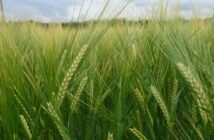The AHDB planting and variety survey (PVS) provisionally estimates the 2025/26 oat planted area at 207 Kha, if so it will be the largest since 2020.
It continues a trend of stable growth in the oat area recently, partly driven by improved planting conditions, particularly a favourable late autumn in 2024 and supportive spring weather in 2025, and possibly the opening up of markets.
According to data firm Kantar, oat milk is now the UK’s favourite plant-based drink with retail sales of £275m, up from £155m five years previously.
With another year of strong production likely and higher than average carry in stocks expected for 2025/26, the UK oat balance could be well supplied this season, especially with muted human and industrial (H&I) uptake from the previous season. However, AHDB analysts believe there are signs H&I demand could pick up as the season progresses.
Alpro’s move to 100% UK sourcing
Earlier this year, Danone announced that Alpro, a leading plant-based drink manufacturer, will be using 100% British oats for its long-life oats and chilled oat drinks, with plans to expand this sourcing to its barista range in the future. Alpro plans to produce around 58 million litres of British oat drink annually at its Kettering Navara mill.
Producing oat milk requires about 90–100 grams of oat flour per litre, meaning Alpro’s planned 58 million litres would need around 5,800 tonnes of flour. After processing to make flour, 28-32% of raw oat weight is lost as hull and around 10% can be lost during milling.
This means producing 5,800 tonnes of flour could require 8000 – 9500 tonnes of raw oats, depending on quality.
The move by Alpro could somewhat boost domestic oat milling demand, especially at a time when H&I demand has lagged behind the historical average. Although the increase in demand will likely be relatively small (c. 2% of total UK oat H&I consumption), if other manufacturers follow suit or if Alpro expands production further, this could lead to a more structurally supported domestic oat market.




